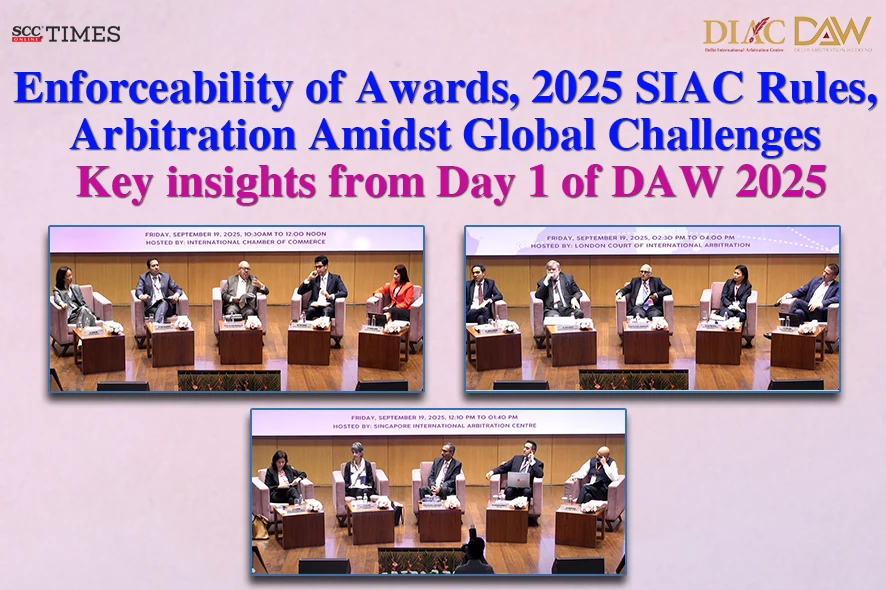Kicking off the much-awaited 3rd Edition of the Delhi Arbitration Weekend (‘DAW 2025’), the inaugural session was organised by the Delhi International Arbitration Centre (‘DIAC’) at the Supreme Court of India on 18-09-2025. The event was graced by Chief Guest Justice BR Gavai, the Chief Justice of India; Justice Devendra Kumar Upadhyaya, the Chief Justice of the Delhi High Court, and Justice Stephen Gageler AC, the Chief Justice of the High Court of Australia.
SESSION 1 | The Anatomy of an Enforceable Award: Mapping Responsibilities of Courts, Institutions and Arbitrators
Hosted by the International Chamber of Commerce (‘ICC’), the session delved into the Responsibilities of Courts, Institutions and Arbitrators in ensuring the enforceability of an award.

Chaired by Justice Hrishikesh Roy, Former Judge, Supreme Court of India, the esteemed panel comprised of Ms. Chiann Bao, Independent Arbitrator; Mr. Viren Mascarenhas, Founding Partner, Mascarenhas Law PLLC; Mr. Tejus Chauhan, Director, South Asia, Arbitration & ADR, ICC; and Ms. Shaneen Parikh, Partner, Cyril Amarchand Mangaldas.
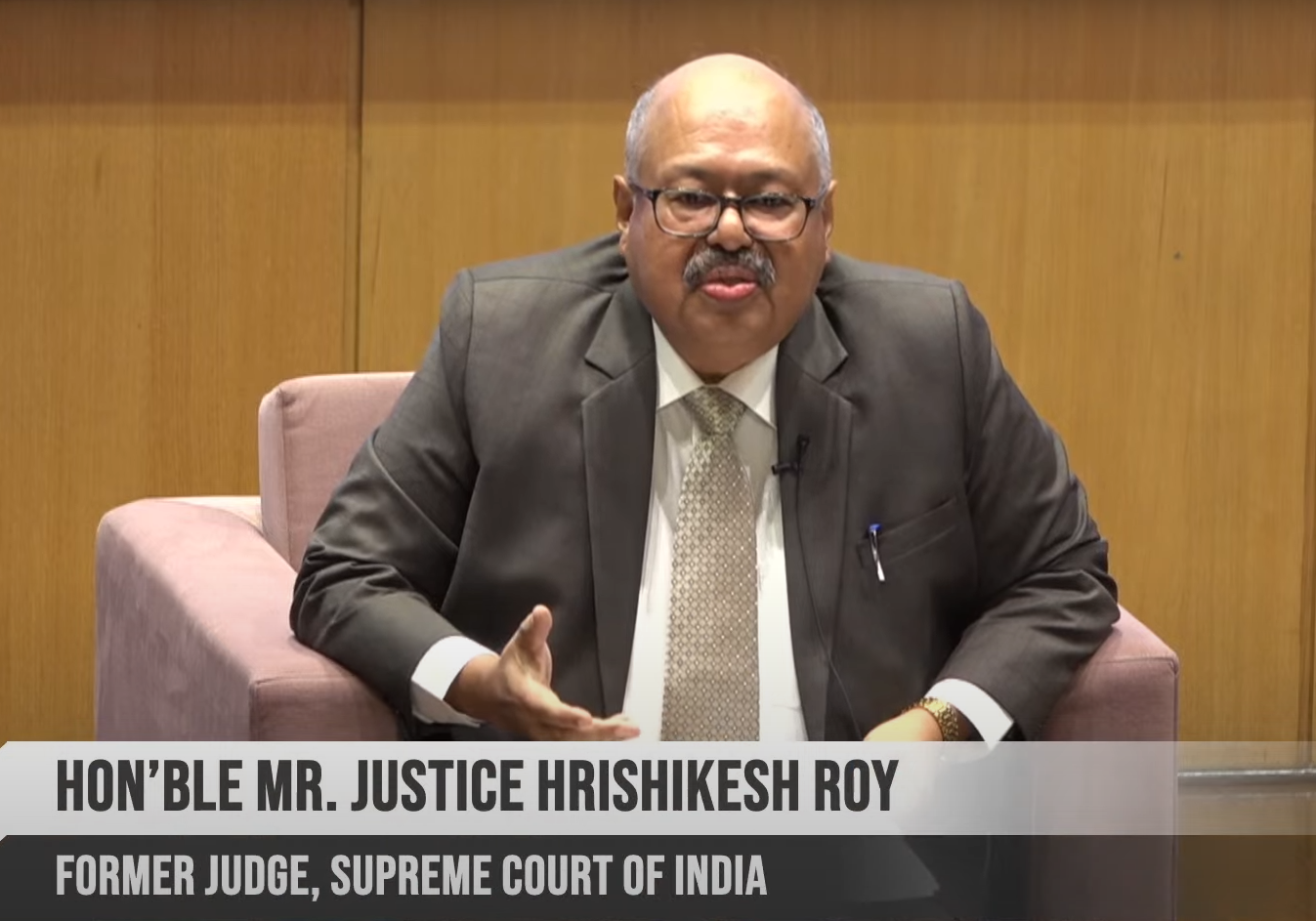
After welcoming the panellists and guests, Justice Hrishikesh Roy began the discourse by underscoring the importance of the enforceability of an award. He mentioned that enforceable award required reasoning, submissions of the parties, signatures of the arbitrators, and it must satisfy the procedural formalities.
“Arbitration is not merely about rendering awards in disputes behind closed doors; it must achieve its fruition, unless people can enjoy the fruits of the award, then the entire process is stillborn.”
– Justice Hrishikesh Roy, Former Judge, Supreme Court of India
Justice Roy drew a parallel between Lord Krishna’s story of procuring amrit from the ocean and receiving an enforceable award via a skit and demonstrated the role of institutions in ensuring the enforceability of an award.
Thereafter, Justice Roy invited Ms. Chiann Bao and Mr. Viren Mascarenhas to provide their insights on enforcement issues due to defective drafting of the arbitration clause, impact of interlocutory orders on enforceability of an award, and the procedural missed steps at the interlocutory stage, which might have a bearing at the enforcement stage.
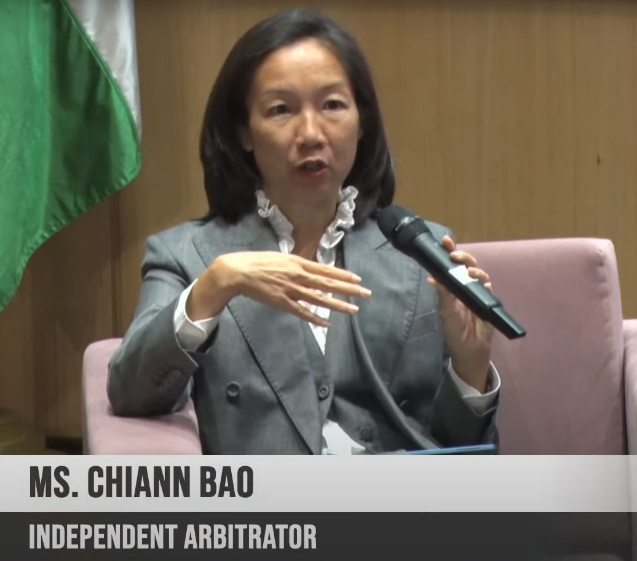

Mr. Mascarenhas responded that usually the arbitration clauses were drafted by transactional lawyers, but they did not really focus on them in the flow of closing a deal, and that could later impact the ultimate result in case the parties go into arbitration. There was a tension between wanting to be, prima facie, descriptive and drafting a succinct clause that allowed flexibility to the parties and the arbitrator.
Opening the floor for everyone, Mr. Mascarenhas provided a short list of things that one should be cognizant of while drafting an arbitration clause, in his opinion. First, deciding carefully whether the arbitration would be ad hoc or institutional; if it was institutional, then the correct name of the institution had to be included. Second, mentioning the place or seat of arbitration while keeping in mind which Courts would have supervisory jurisdiction. Third, stating the time limits carefully and providing a discretionary power to the institution or tribunal to extend the same.
Ms. Bao added that in her opinion, the arbitration clause should be clean, precise, and as close to the institutional model clause as possible. However, there were a few things to be kept in mind while drafting arbitration clause, such as knowing the institutional rules if they are being incorporated by reference, being aware of the law governing the clause, and in case there are scenarios of the transaction being between more than two parties, then being mindful of the consolidation clause and whether there are institutional rules on the same.

Ms. Shaneen Parikh enlightened the audience with a few suggestions for drafting appropriate arbitration clauses that would smooth the process and ensure effective enforcement. First, parties must agree on opting for arbitration, and the clause must clearly express that intention. Second, determining the scope of the arbitration agreement, the arbitrator’s jurisdiction, and the dispute that would be referred to arbitration. If that was not certain, then keeping the scope general would avoid leaving out any dispute or part of a dispute from the purview of arbitration. Third, mentioning the seat of arbitration, especially in cross-border disputes.
Regarding the law governing the arbitration agreement, Ms. Parikh emphasized that this law determined the critical aspect of whether the dispute was arbitrable. She explained the importance of being cognizant of the law by reflecting on the famous Anupam Mittal v. Westbridge case.
Thanking Ms. Parikh for her invaluable insights, Justice Roy invited Mr. Tejus Chauhan to shed light on the difficulties faced during institutional proceedings attributable to a poorly drafted arbitration clause.

From the perspective of ICC, Mr. Chauhan remarked that the regular issues pertained to whether the parties wanted ICC Arbitration, Courts, or some other rules and attribution to the characteristics of the arbitrator in the clause itself. He emphasized the importance of not being too creative while drafting the clause and not imposing a set timeline, which may force the institution to go against its rules.
Thereafter, Justice Roy posed a question to Ms. Bao on navigating the aspect of a tribunal not being adequately briefed on a foreign law, leading to the tribunal assuming similarity with the law applicable at the seat of the arbitration and wrong application of the law at the enforcement stage.
Ms. Bao responded that though parties had the opportunity to choose their arbitrators, what ends up happening sometimes, especially when the case is not before the traditional seats, questions may arise on whether the arbitrator knows the law. There was an assumption that they did, but it requires the parties to engage with the chosen governing law and be aware of the possibility of such a disconnect. However, Ms. Bao emphasized that, from a practical and procedural aspect, it was useful for the arbitrators to know that this vacuum may exist and recognize that not all parties may understand international arbitration. The tribunal must be sensitized to that and ensure that there is no surprise in the process for the parties, in case someone is inexperienced.
“The Tribunal has to satisfy itself that they are rendering an enforceable award and, in doing so, they have to satisfy themselves that they have addressed the specific nuances and issues associated with the foreign law.”
-Ms. Chiann Bao, Independent Arbitrator
Furthering the discourse, Ms. Parikh advised on dealing with the issue of the non-represented or poorly represented parties challenging an award on procedural fairness, while Mr. Chauhan spoke about situations where ICC intervenes suo motu in the arbitration process. Additionally, Mr. Mascarenhas shed light on the scenarios where the counsels weaponize the due process concerns purely to create grounds for challenge, such as challenging the independence of the arbitrator, seeking extensions, misusing the gap between document production mechanisms in an international arbitration, etc. Ms. Bao provided solutions to deal with these tricks deployed by the counsels to prevent negative consequences.
The panel concluded by delving into the enforcement of emergency orders, the practicalities of finalizing an award, scrutiny of awards by institutions, and the use of AI.

SESSION 2 | 2025 SIAC Rules: Charting a New Course in International Arbitration
Hosted by the Singapore International Arbitration Centre (‘SIAC’), the panel discussed the new 2025 SIAC Rules (‘the 2025 Rules’).

Chaired by Justice L. Nageswara Rao, Former Judge, Supreme Court of India, the esteemed panel comprised of Ms. Lucy Reed, President, SIAC; Mr. Sudhanshu Swaroop KC, Twenty Essex; Mr. Prantap Kalra, General Counsel, JCB India Ltd; and Ms. Ila Kapoor, Partner, Shardul Amarchand Mangaldas & Co., Member of SIAC.

Justice L. Nageswara Rao began the session by briefly talking about the emerging issues of speed and costs in international arbitration and the work of SIAC. He underscored that SIAC’s rules were among the top five arbitral institutions whose rules were preferred by litigants, and it had been the torchbearer in some cases, for example, it introduced Emergency Arbitration in 2010, issued Investment Arbitration Rules in 2017, and it is the only private international arbitration center which had separate rules for commercial arbitration and investment arbitration.
Regarding the 2025 Rules, Justice Rao invited Ms. Lucy Reed to elaborate on the historical background, the reasons behind, and the processes that were adopted in making them.

At the outset, Ms. Reed expressed that the SIAC Rules were like the computer software that had to be updated just enough to stay current and not too often that the users are unable to keep up. Then, she provided a brief history of the SIAC Rules, such as issuance of the 4th Edition in 2010, which introduced emergency arbitration, the 2014 rules, which promoted the Arb-Med-Arb process, introduction of rules for multi-party arbitrations, and lastly the 2025 Rules.
Answering the question, she traced the process of the drafting the 2025 Rules, starting from the Secretariat making a draft of the amended rules, to the draft going for internal review and discussions, to the draft being put out for extensive public consultation from the users and other stakeholders, to the comments being collated, to working with the SIAC Court members, to finalising, and lastly, to issuing.
Thanking Ms. Reed for her detailed description, Justice Rao asked Mr. Sudhanshu Swaroop KC about the changes made by the Rules to the emergency arbitration provisions and how they measured up to the global trend of strengthening emergency relief.

First and foremost, Mr. Swaroop outlined the changes made by the rules regarding emergency arbitration. In the previous version, the 2016 Rules, SIAC was obliged to appoint an Emergency Arbitrator within one day of receiving an application for the appointment. The Emergency Arbitrator then had 14 days to receive submissions from the parties and provide the emergency decision. There was express provision for the Emergency Arbitrator to grant relief in the intervening period of 14 days. In the 2025 Rules, a party can, without notifying the other side, apply for an Emergency Arbitrator, requesting the ultimate interim emergency award, along with an application for a preliminary order. The SIAC President can then appoint the Emergency Arbitrator within 24 hours, and the Emergency Arbitrator then has 24 hours to determine the preliminary order application. Within a further 12 hours, the applicant must deliver to the other parties a copy of the case papers that have been filed, the Arbitrator’s order, and all communications between the applicant and the Emergency Arbitrator. Thereafter, they had 14 days from the appointment of the Arbitrator for the completion of the emergency decision.
With that background, he demonstrated that the provision of an ex parte status quo order in the 2025 Rules was an innovation of the SIAC. However, since there was no international consensus about the enforceability of these kinds of ex parte orders, there was a risk that these ex parte orders made by Emergency Arbitrators under the SIAC Rules would not be enforceable due to the contention of due process violation. Lastly, he compared the 2025 Rules to the UK Arbitration Act, 2025, and expressed the uncertainty of how these ex parte orders would be treated under the new UK regime.
Taking the discussion forward, Justice Rao asked Ms. Ila Kapoor whether the new timeline for delivery of awards and the expanded grounds for challenge of an Arbitrator under the 2025 Rules strike a right balance between quality and efficiency.
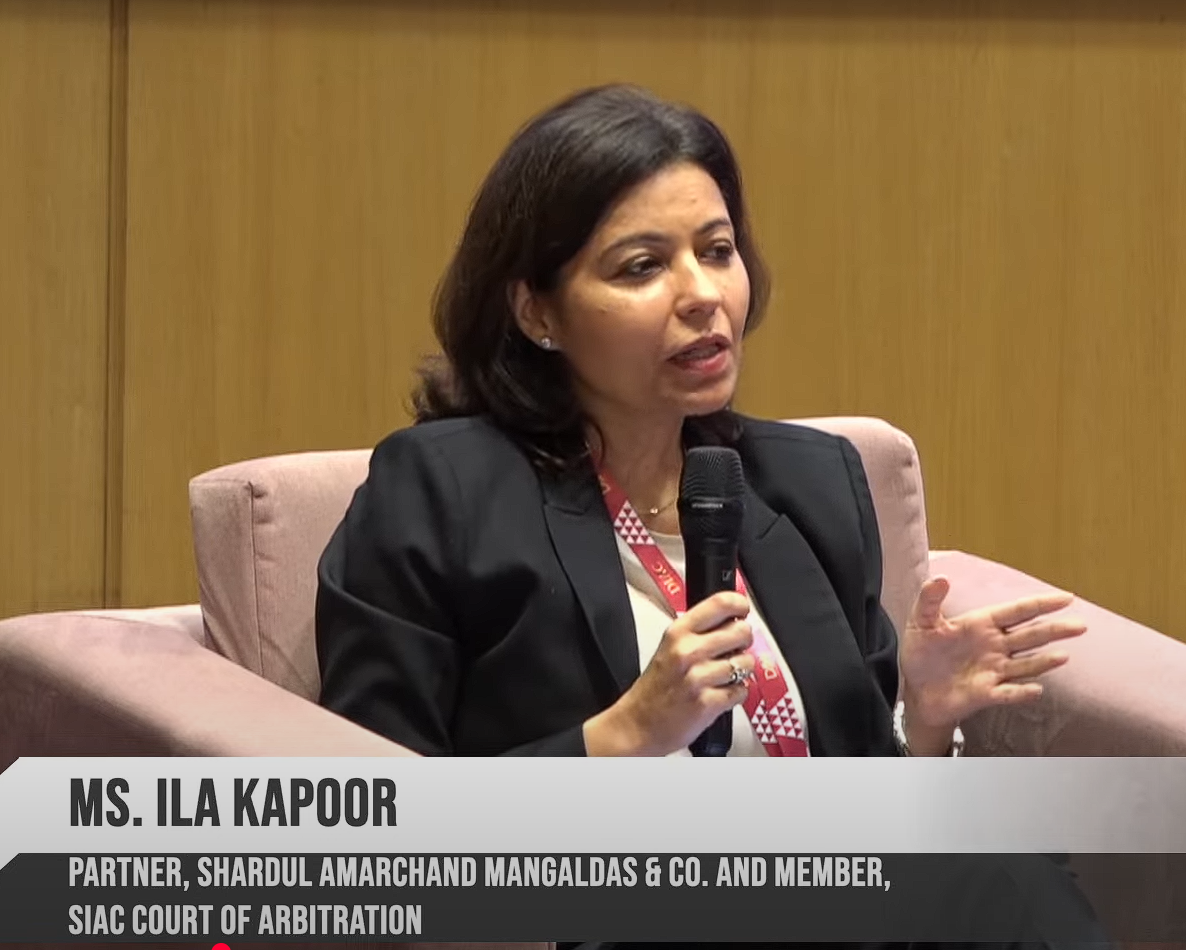
Ms. Kapoor explained that, as per the 2025 rules, now the tribunal has 30 days from the last directed submission to inform the parties and the registrar when they will give the award, and within 60 days, they have to give the award. The 2025 Rules also increased the threshold limit of $6 million in expedited proceedings to $10 million. Thus, an expedited proceeding has to be finished within six months from the constitution of the Tribunal. For the arbitrations that are only under $1 million value limit, the Tribunal has to pass the award within three months. Clearly, there’s going to be no discovery process and no cross-examination; it is going to be based only on the evidence as submitted with the pleadings.
Ms. Kapoor added that, interestingly, the 2025 Rule had introduced “de jure or de facto incapacity” as a ground for challenging the appointment of an arbitrator, a ground that already existed in the Arbitration and Conciliation Act, 1996. She remarked that it would be interesting to see how SIAC will interpret de jure or de facto inability.
Thus, she concluded by commenting that SIAC had made efforts to speak to users’ demand for more certainty in the arbitral process.
“Predictability is just as critical as efficiency.”
-Justice L. Nageswara Rao, Former Judge, Supreme Court of India
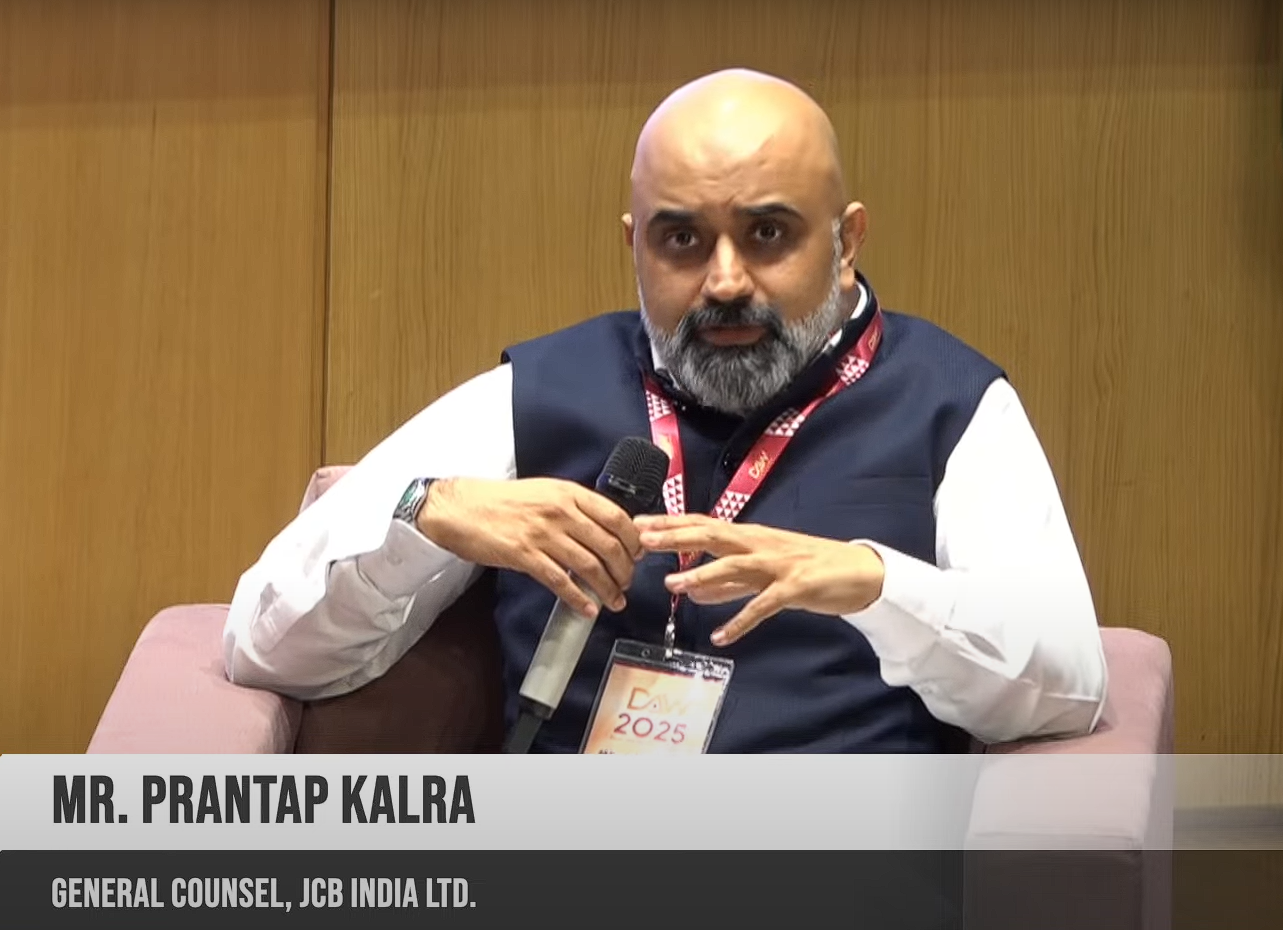
On the introduction of early dismissal and preliminary determination in the 2025 Rules, Mr. Prantap Kalra opined that these time-bound processes would introduce checks and balances that disputing Parties or in-house Counsels will have to consider. He stated that these processes would help in dismissing issues that lacked legal merit or jurisdiction and help the parties to focus on the real contentious issues and claims.
“There is definitiveness in both these processes of preliminary determination and early dismissal which should help us all.”
He concluded by saying that from an in-house perspective, the 2025 rules provided wider grounds, a clearer and more predictable process, more defined and accelerated timelines, and lastly, efficient and effective resolution of disputes with the use of technology.
Further, the erudite panel discussed various other aspects of the 2025 Rules such as the scope of the protective preliminary orders and their safeguards, enforceability of emergency arbitration awards and protective preliminary orders, impact of the new SIAC toolkit for multi-Contract disputes with joinder, consolidation and coordinated proceedings, third party funding disclosure, rules that did not make it to the 2025 rules, the new expedited and streamlined procedures, digital case management, encouragement of mediation in the 2025 Rules, and the Arb-Med-Arb protocol.
The panel concluded with a short question-and-answer segment with the audience.

SESSION 3 | Arbitration Amidst Global Challenges and Change
Hosted by the London Court of International Arbitration (‘LCIA’), the panellists discussed the impact of global challenges, geopolitical tensions, and other international changes on arbitration.

Chaired by Justice S. Ravindra Bhat, Former Judge, Supreme Court of India, the esteemed panel comprised of Mr. James Castello, Independent Arbitrator, Arbitration Chambers; Mr. Manish Aggarwal, Partner, Three Crowns; Ms. Koh Swee Yen SC, Head of the International arbitration Practice, Wong Partnership LLP; and Mr. Kevin Nash, Director General, LCIA.
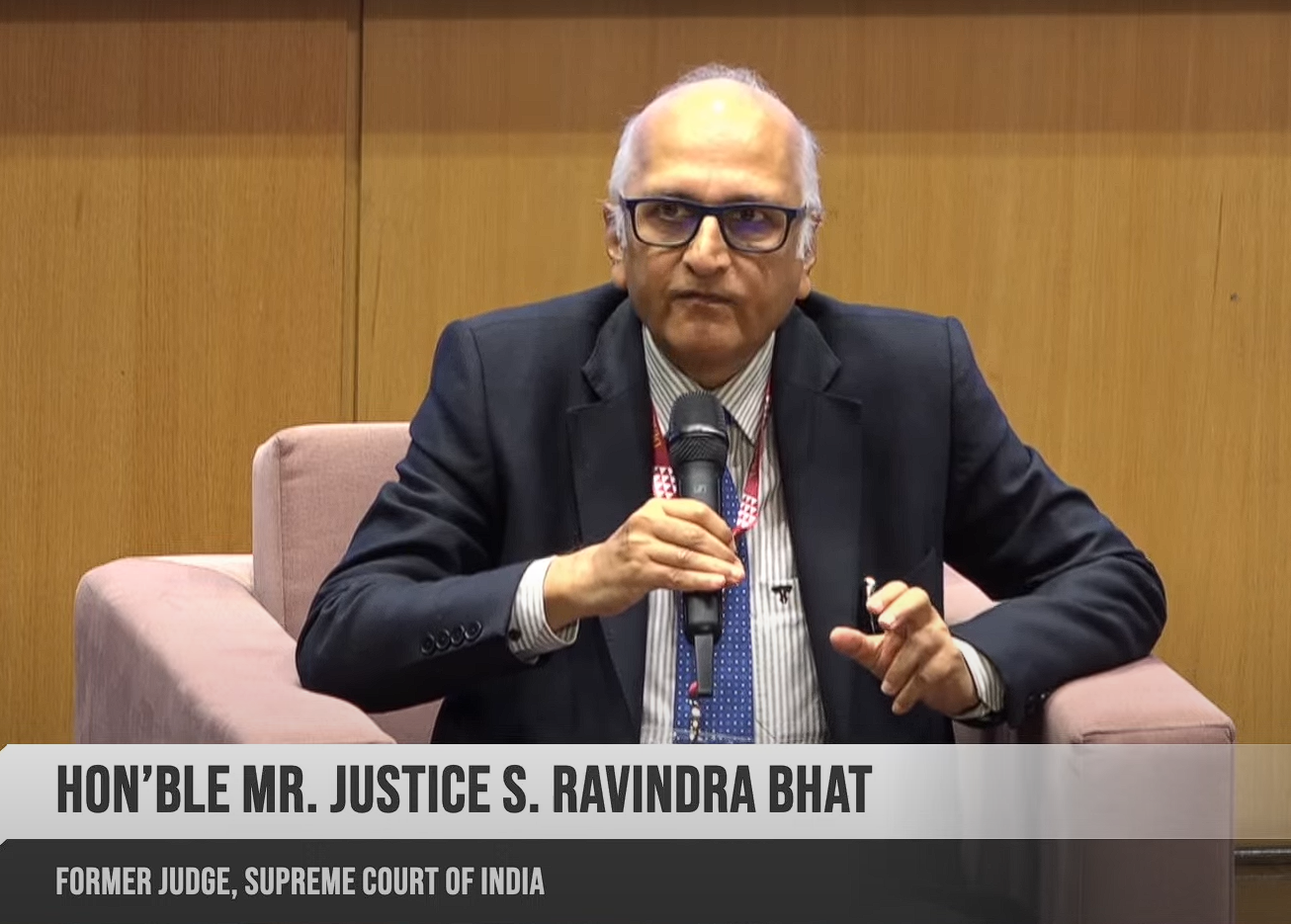
Kicking off the discussion, Justice S. Ravindra Bhat laid out the structure of the discussion and the topics therein namely, UNCITRAL Working Group Reforms, including the proposal for a multilateral investment court and ICSID reforms, regulatory unpredictability, climate change and its impact on investment treaties, recommendations for a resilient arbitration system, and the disruptions which the current global economy is facing due to conflicts, sanctions, tariffs and the likely economic fallout, etc.
“Arbitration is a means for access to justice and accountability as well as the existential challenges we face today due to climate change, technology, and a host of other factors.”
– Justice S. Ravindra Bhat, Former Judge, Supreme Court of India

On the first sub-topic of UNCITRAL Working Group Reforms, Mr. James Castello explored the reasons and background for the introduction of the investment arbitration reform. The group has adopted some provisions, a code of conduct for arbitrators dealing with issues like double hatting, an idea for a multilateral advisory center which would help those States that are not familiar with defending ISDS claims, a toolkit of recommendations to countries about what steps they can take to either prevent or defuse disputes with foreign investors before they become claims, etc.
Mr. Castello explained that the attempt was to echo the reforms that were recently adopted in the International Centre for Settlement of Investment Disputes (‘ICSID’) Rules, 2022, and a determination to try to insert comparable reforms in the UNCITRAL Rules. Some examples of these reforms were early determination of manifestly unmeritorious claims, new guidance on how to allocate costs, and new time limits for rendering the award. He opined that there would be a multilateral treaty that would have many reform options, and each signatory would be able to decide which of the reforms it wants to adopt and thereby amend its prior international investment treaties on the same subject matter.
Lastly, he shed light on the progress of the Multilateral Investment Court and the issues faced by the working group therein.
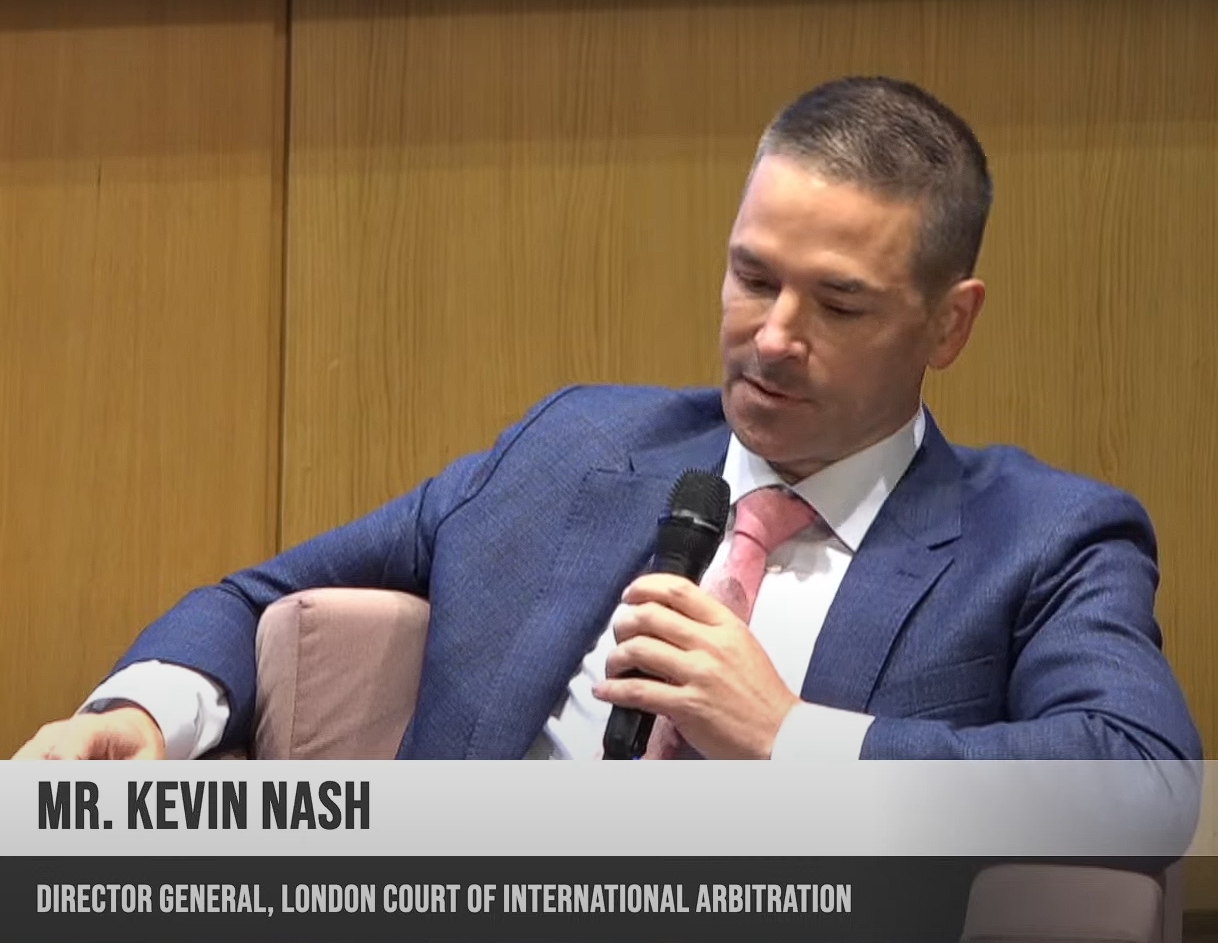
Moving on to the next topic, Justice Bhat invited Mr. Kevin Nash to speak about the creation of a resilient arbitration system and the issue of data protection.
Mr. Nash underscored that the best arbitration would be fast, cost-effective, efficient, have party autonomy, have limited avenues of appeal, be confidential, and enforceable under the New York Convention. However, in the complicated geopolitical arena with trade wars, tariffs, armed conflicts, etc., there were the London Centenary Principles, 2015, for defining a safe seat of arbitration. In his opinion, there were certain principles that institutions could adopt to ensure and be the guardians of the arbitration system, for example, the Korean Commercial Arbitration Board (‘KCAB’) Remote Hearing Protocol introduced right before COVID-19 in 2018, which all institutions were able to adopt.
Through the lens of LCIA, he mentioned a few qualities that one shall possess to ensure that arbitration stays as this most preferred mechanism for resolving cross-border disputes, namely, independence and integrity, commercial, predictable, and cost-effective.
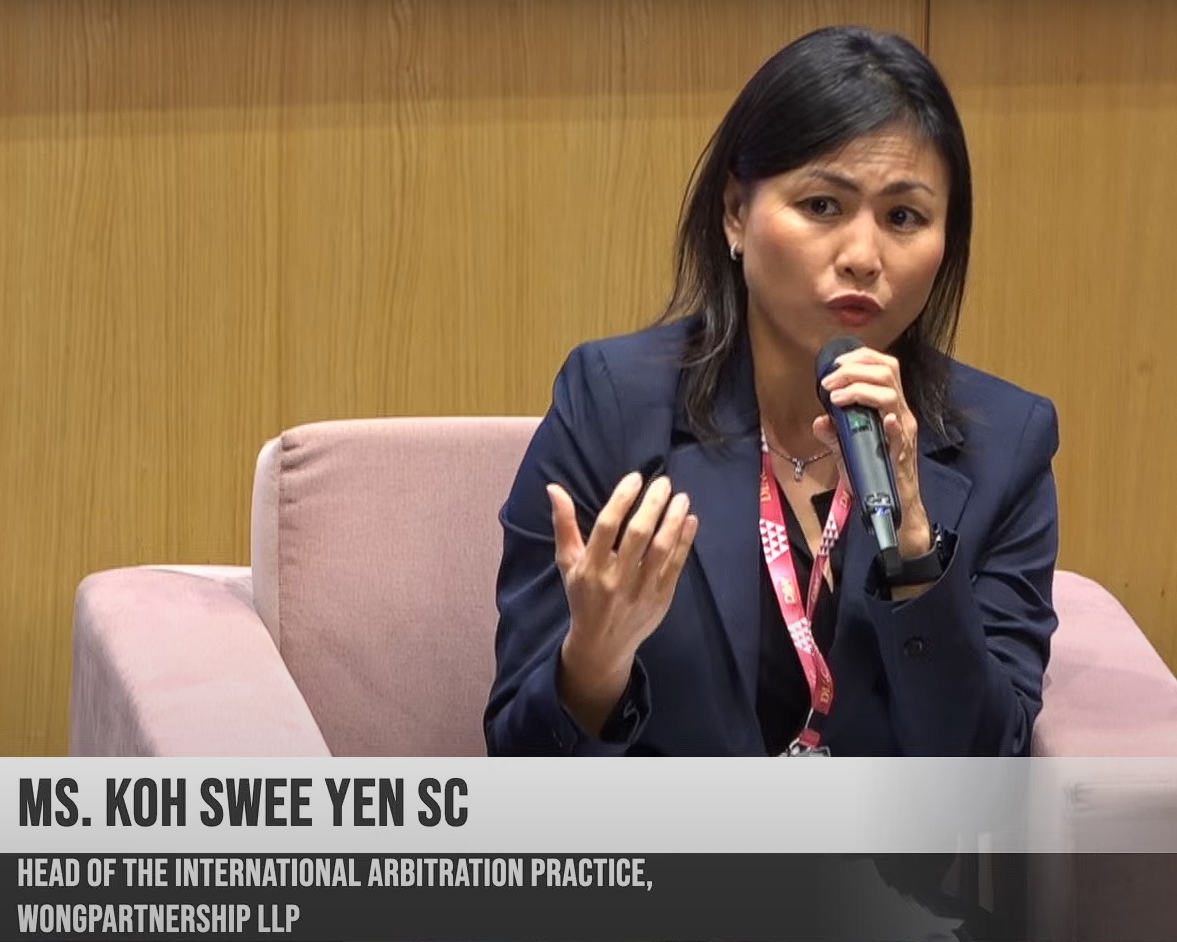
Ms. Koh Swee Yen SC agreed with Mr. Nash and added that the tribunal members were also important players in ensuring that the arbitration system was resilient. They need to be proactive, manage the case well, know the rules well, comply with the rules, move the case along, understand that this is commercial, and be transparent and accountable.
“The arbitration system can only be resilient if you have Tribunal members who truly believe in the system and want the system to work well, and coupled with that, the Courts who continue to uphold the system.”
-Ms. Koh Swee Yen SC, Head of the International arbitration Practice, Wong Partnership LLP
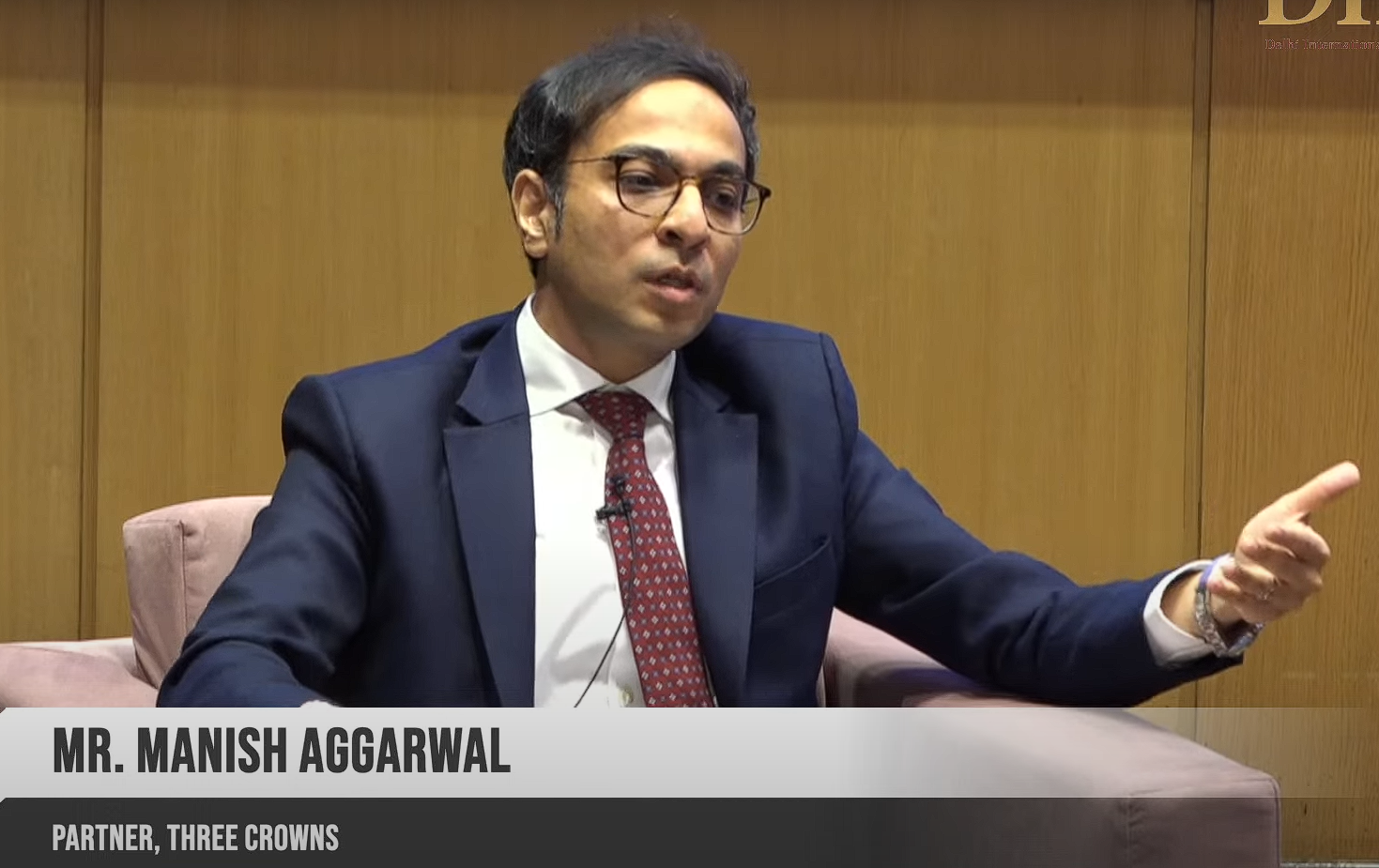
On the topic of regulatory predictability and the impact of climate change on arbitration, Mr. Manish Aggarwal shared his insights on how climate change-related considerations were reshaping the system of investment treaty arbitration. He explained that there were two broad categories of cases in which environmental issues have played out. First are cases involving state measures that have affected our more conventional forms of energy, for example, revocation of permits for hydrocarbon exploration and phasing out of coal. Second are the cases involving claims by investors in newer energies, who have found themselves faced with State revocation of subsidies or incentives that were offered to attract investments.
He further highlighted the advisory opinion of the International Court of Justice, which confirmed that all states had binding obligations under both international climate change treaties as well as in customary international law, violation of which would constitute an internationally wrongful act and entail consequences for the State. The Inter American Court of Human Rights also took a similar approach. He also explained what this may mean in practice for both investors and states.
In conclusion, Mr. Aggarwal noted that there would be two trends: first, domestic climate regulation will tighten across the globe, resulting in stricter emission standards, more ambitious phase-outs, and greater scrutiny of any kind of fossil fuel production. Second, treaty drafting will evolve even further, particularly in terms of creating carve-outs for the right of States to regulate.
Thereafter, Mr. Castello discussed the fragmentation of jurisprudence on Investment Treaty Arbitrations, while Ms. Yen spoke about handling the disruptions caused by sanctions and geopolitical tensions, such as armed conflicts. In the same vein, Mr. Aggarwal and Mr. Nash spoke about funding issues and administrative challenges due to sanctions.
The panel concluded with a short question-and-answer segment with the audience.
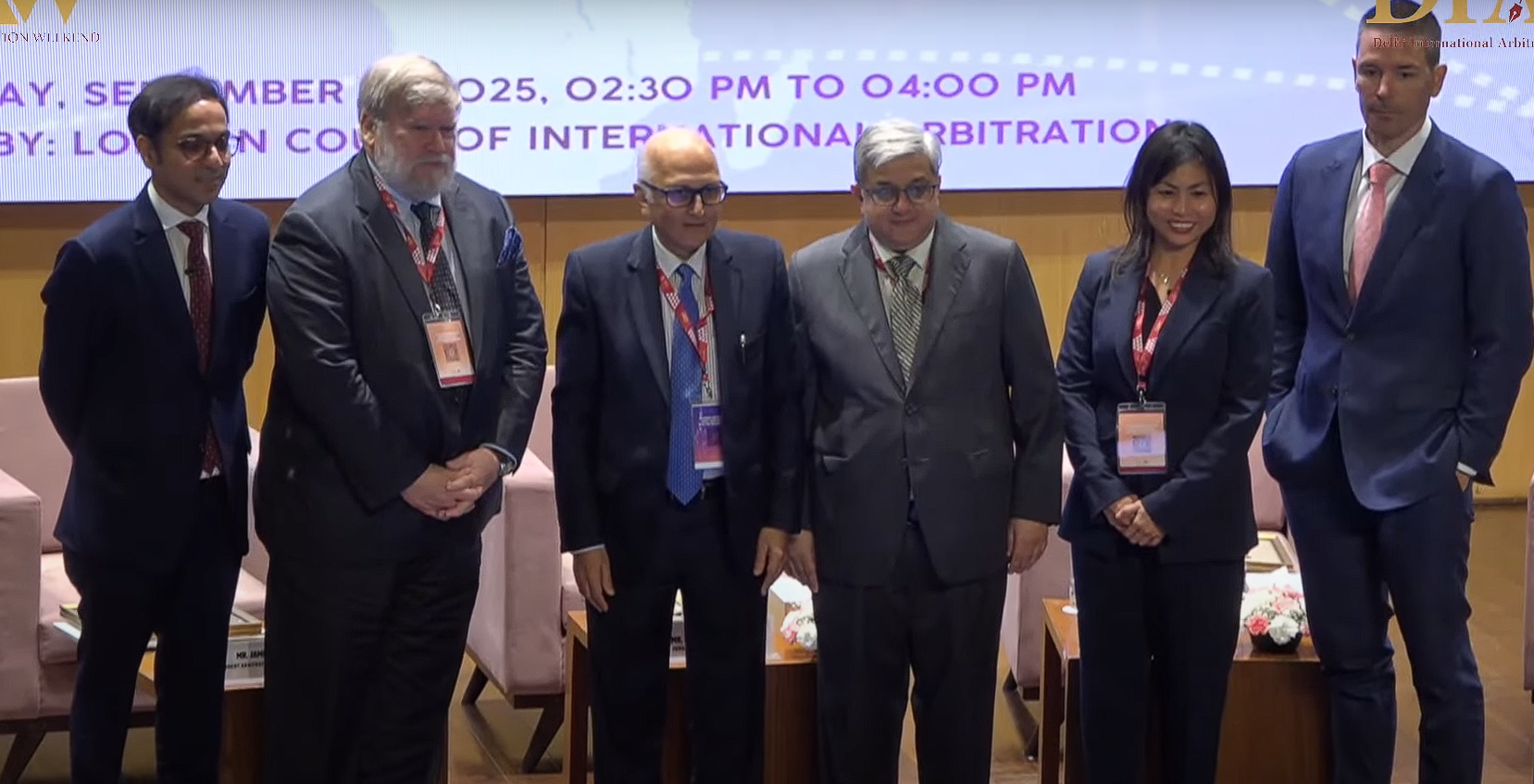
SESSION 4 | Environmental Concerns in Investor-State Dispute Settlement
The last session of the day was hosted by the Permanent Court of Arbitration (‘PCA’) and chaired by Justice Indu Malhotra, Former Judge, Supreme Court of India. Speaking on such a prevalent topic, the esteemed panellists, namely, Mr. Mahesh Rai, Director, Dispute Resolution Deputy Head, Construction & Engineering, Drew & Napier; Mr. Aditya Singh, Partner, White & Case LLP; Mr. Sudhanshu Roy, India Desk Head, Foley Hoag; and Ms. Ashwita Ambast, Legal Counsel, PCA.
Day 1 of DAW 2025 concluded with evening receptions conducted by the Mumbai Centre for International Arbitration and Brick Court Chambers.



